Thanks to Richard Stickney (Butterfly House Conservatory) I was able to get a look at, and a few photos of, an orchid growing here at the Museum. Richard spotted the leaves of the orchid last winter and had been waiting for the flowers to appear. It’s now in bloom.
The orchid is a crane-fly orchid (Tipularia discolor). These orchids show leaves on the forest floor in fall and winter. The leaves disappear as the flowers emerge the following summer. It’s not a particularly colorful orchid, two spikes of small green-brown flowers is all that’s visible through the woods. You have to look carefully to see it.
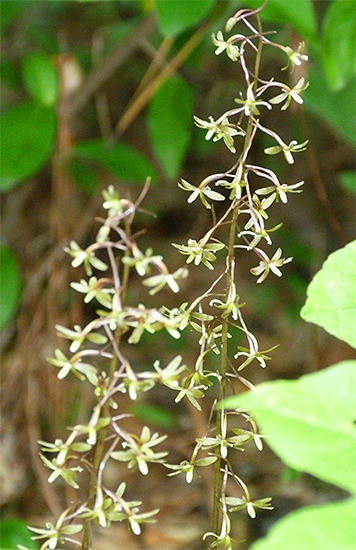
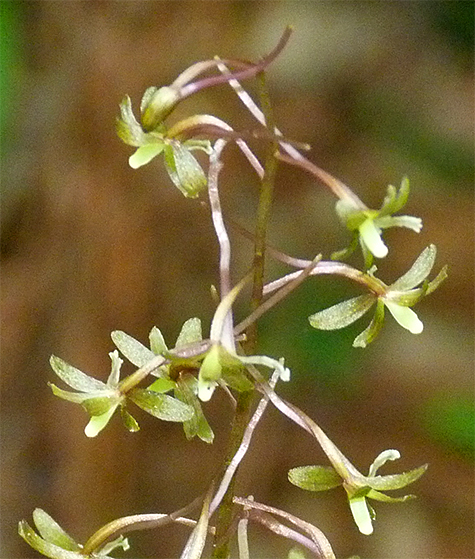
The orchids are pollinated by moths.
Another flowering plant in bloom at this time is trumpet vine (Campuses radicals). Much more common and easy to spot, this flowering vine with long tubular red flowers is familiar to most people. It’s currently in bloom and showing seed pods alongside the flowers.
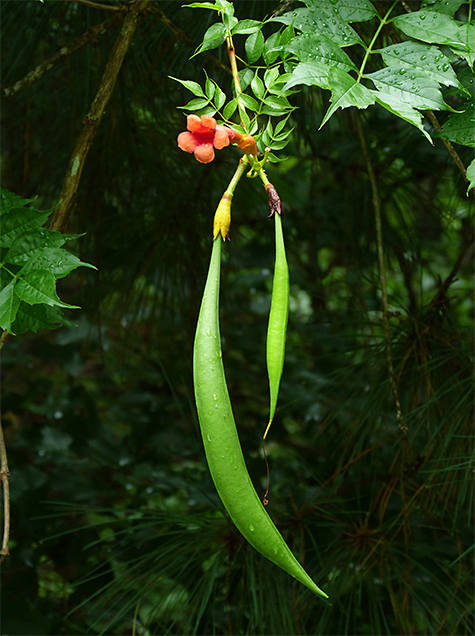
Some folks are sensitive to the touch of the foliage of trumpet vine, getting a rash much like they would from poison ivy. I’ve personally never had a problem with this vine, but know others who have.
Another climbing vine showing the fruits of its labor is passion flower or passion vine (Passiflora).
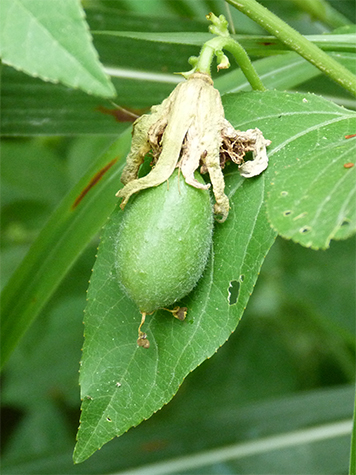
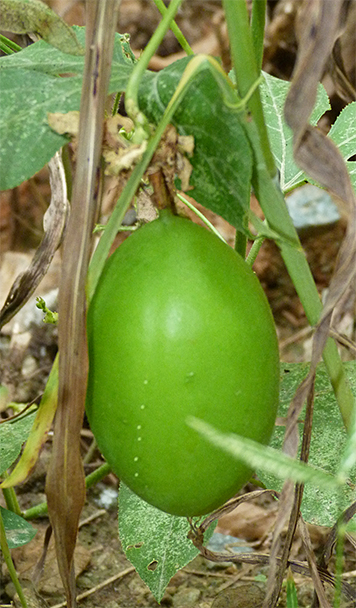
The flower…
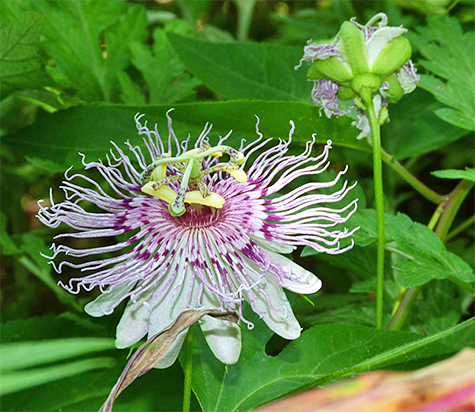
While walking past a silky willow along the path on Explore the Wild, I noticed a very white and fluffy object on one of the leaves. It looked like a caterpillar, but not one I was familiar with.
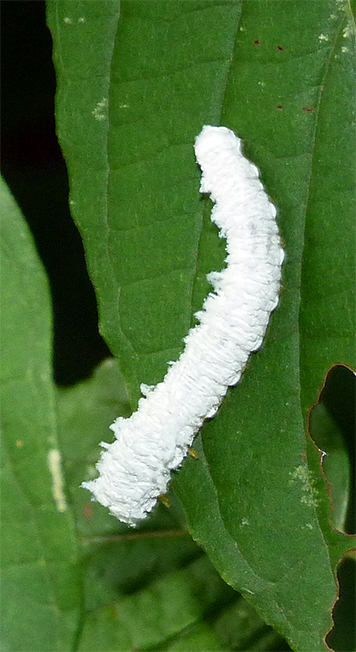
It curled up into a coil as a poked at it. It also fell to the ground, having no grip on the leaf in such a coil. I picked it up and placed it on another leaf. As I did, some of the white waxy substance came off in my hand. As the insect crawled along the edge of a leaf I could see that it had many more legs than would a caterpillar.
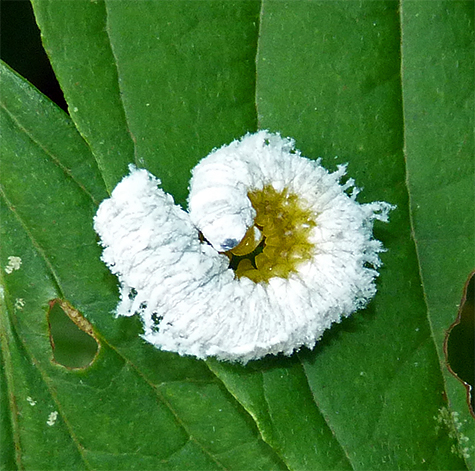
Caterpillars have three pairs of true legs and a maximum of five pairs of prolegs. Prolegs are temporary gripping legs used only in the larval stage of moths, butterflies and sawflies while the larvae feed on leaves and plant parts. The extra legs help them to hold on while feeding. Adults of all of those insects have three pairs of legs.
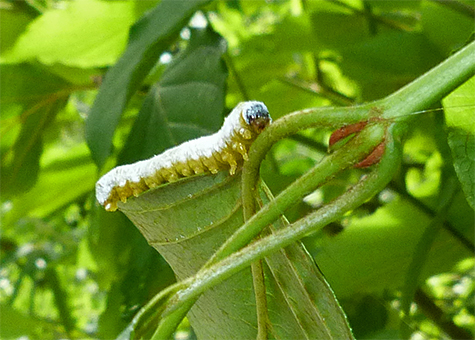
This had to be a sawfly, but which one. Many insects are specific to certain plants. The larva in question was on a dogwood.
It would be wise to search for a sawfly that specializes in dogwoods.
Sure enough, my search led me to dogwood sawfly (Macremphytus tarsatus).
It seems the very early stages of these larvae are greenish in color and the caterpillars are gregarious in their feeding (feed in groups or clusters). The older stages of the larvae are yellow beneath with black barring or spots on the upper parts (back). What I had discovered was a larva in between those stages which is covered in a white waxy substance and which feeds singly.
I don’t know the advantage for these larvae being bright white while feeding on green leaves. It’s been suggested that it’s a form of camouflage, a kind of bird dropping disguise. It didn’t fool me, bird droppings usually have a bit of black or brown mixed in with the white.
By the way, I don’t have photos of earlier or later larval stages of the sawfly, nor do I have images of the adult.
Something a bit more familiar and common has started to munch away on a small oak tree in Catch the Wind. Each year around this time I find groups of orange-striped oakworms having a feast on the young oaks growing in Catch the Wind.
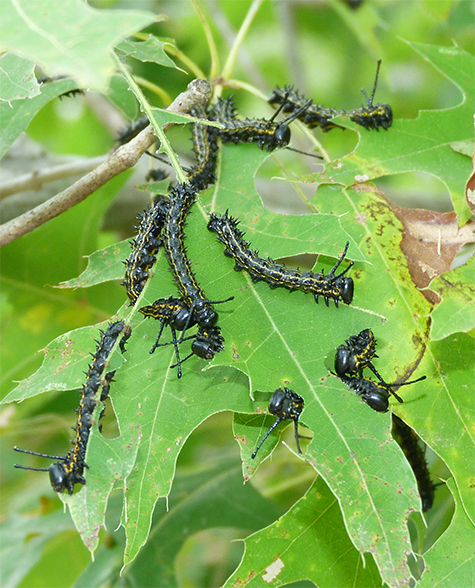
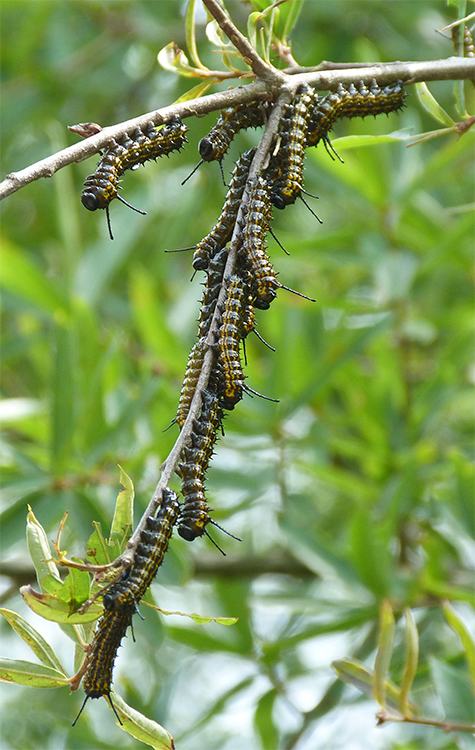
Once the caterpillars reach a certain size they crawl out of the tree in all directions looking for a place to pupate.
On June 25, a little over a month ago, I took several photos of an adult moth in the tree in the above photo. The moth appeared to have just emerged from pupation.
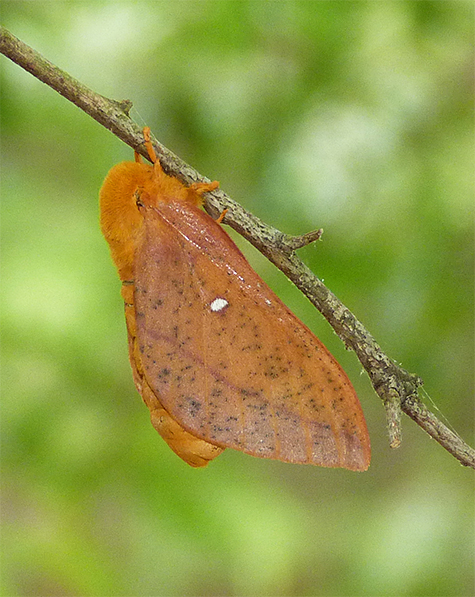
As always, there’s plenty to keep a person occupied out of doors at this time of year!